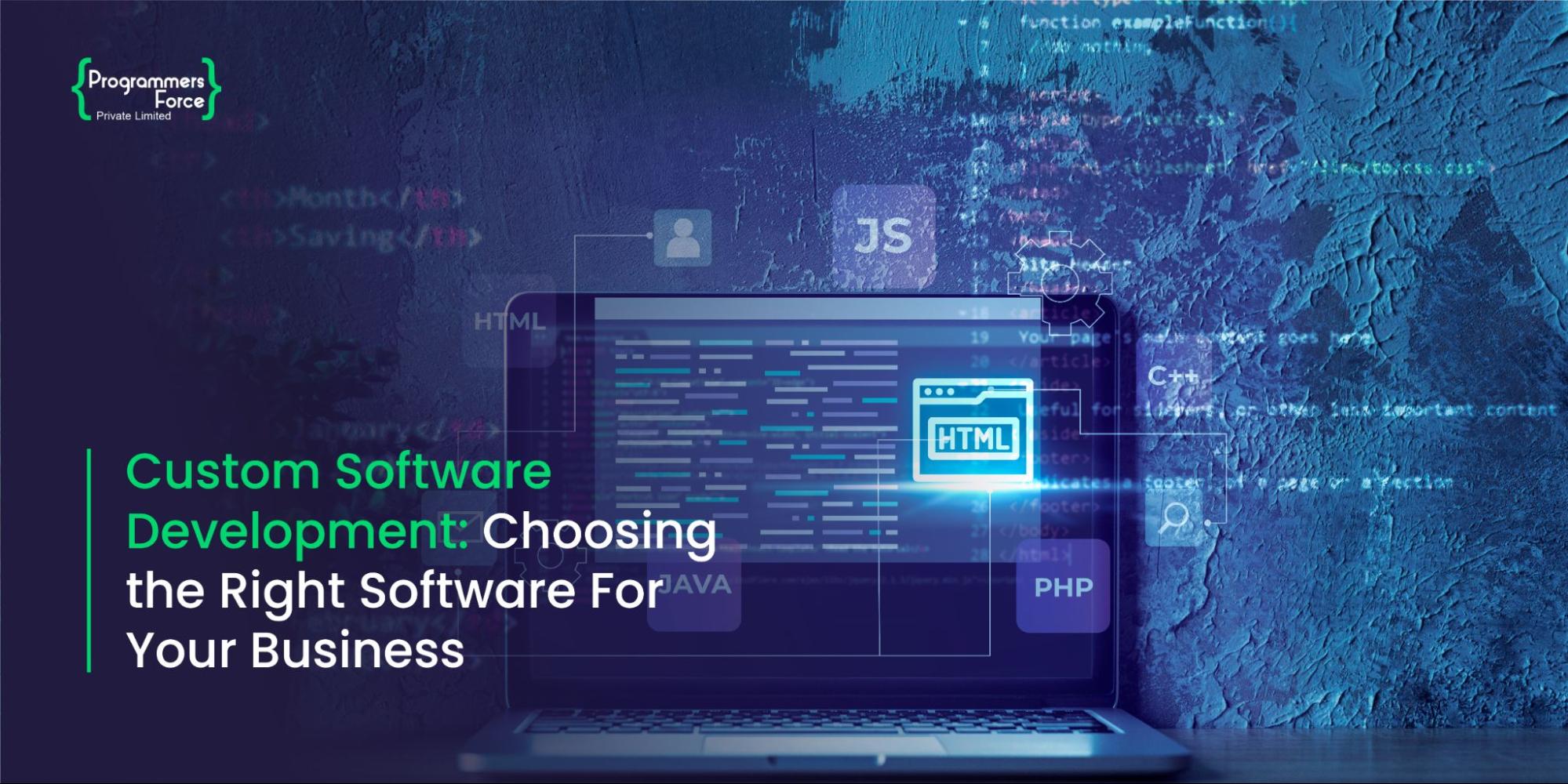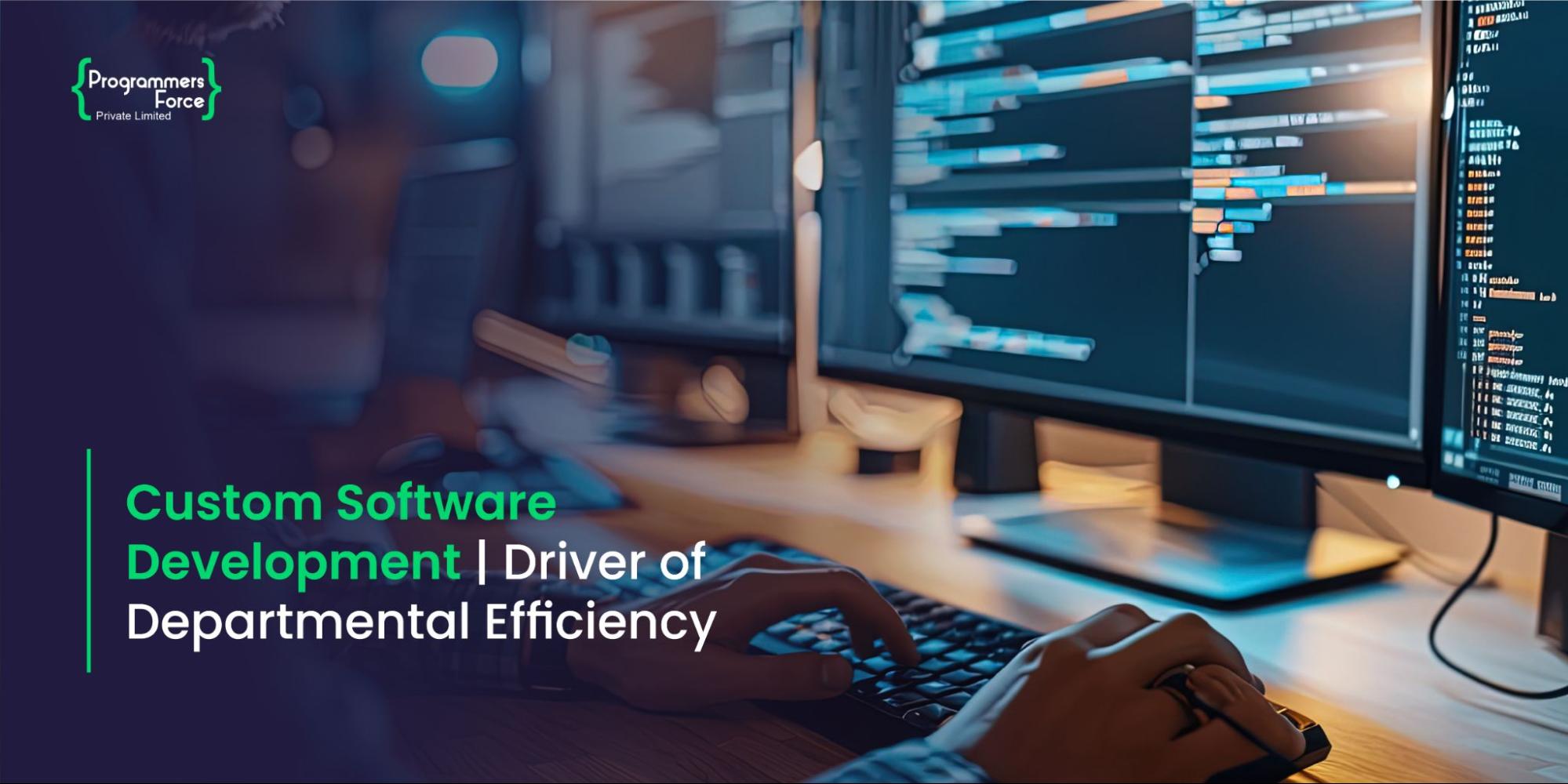
Programmers Force’s Complete Backend Development Guide
In software development, regardless of any platform, two types of developers are responsible for creating user-friendly and eye-catching applications.
One that solely takes care of the front-end side of things, i.e., the client side. The other one is the back-end developer, who implements the back-end functionality of the application also referred to as server side.
The current demand is high for both development stacks. In 2022, the global application software development market was valued at $260.3 billion, which is expected to boost further in the future.
This article covers the core aspects of backend development and the complete career path to get started with future-proof technologies.
What is Backend Development?
As briefly defined above, the back end refers to the functional side of things in an application. It is the implementation of business logic and operations that defines the working cycle of the program.
As far as backend development is concerned, it is a vast field in which different tools and technologies play an essential part. The back-end developers build systems that store, process, and secure data for websites and apps. This operation is in contrast to the front end, where the developers are concerned with direct involvement with the users through UIs.
A backend developer earns high amounts and has great demand in the current development landscape. On average, the highest median salary of a skilled developer crosses $150,000 in the US.
Can we learn Backend development without a Degree?
Everyone can surely learn backend development without a college degree. Most people consider it a demanding field as it covers different technologies and programming skills taught in professional certifications. It is a mistake, as most back-end development skills can be learnt without a CS degree.
Keep reading to get a complete walkthrough of starting backend development from scratch.

Interested in learning front-end development? Make sure to check out our Front-end development guide
Getting Started with Backend
Now getting onto the important part of the topic. The following sections outline a complete roadmap to becoming a professional back-end developer and securing a position in a top development firm.
Learn Programming Fundamentals
Backend development depends on excellent programming skills. To become a server-side expert, one must start learning the fundamental programming concepts, i.e., the basic syntax for writing code and how to handle errors.
Learning concepts like conditional statements (if-else), loops, arrays and variable control and functions (methods) are necessary to get hands-on back-end development.
Note that there are tons of programming languages available in the market, such as Python, C#, Java, Ruby and JavaScript. Mastering any fundamentals will help get an excellent position to move in the field of back-end development.
Master Logic Building and Algorithms
After getting used to programming fundamentals, the next step is to develop a logic-building mindset that brings a creative solution to problems. It is one of the highest demanded aspects for every developer in the world of programming. For instance, implementing real-life scenarios using code such as mathematical calculations.
How to become a problem solver? Well, to develop a logic-building mindset, start practising data structures and algorithms. DSA (Data Structures and Algorithms) is a core field which revolves around computing concepts of storing, modifying, replicating, and creating new data to solve fundamental advanced-level problems.
In data structures and algorithms, people can train their skills, including:
- Data Sorting
- Code Time Complexity
- Problem-Solving
- Advanced Programming Concepts

Move on to the Fundamentals of Web
After getting a decent experience in data structures and algorithms, the next step is understanding the client/server model. It is vital to grasp the model of how the web works to become a back-end developer.
The goal is to understand how the web works in connection with the front end and how the internet processes data on web servers. Some important concepts here to master are:
- HTTPS (Hypertext Transfer Protocol)
- Server communication with Webpages
- Networking Basics
Start Building Web Servers
After mastering the concepts mentioned above in any particular language, it’s time to build self-hosted web servers. For instance, create applications that are backed by web servers. Many options, such as a to-do list and management systems that work on web servers, are available.
Here are some of the prominent technologies that everyone should learn to create web servers:
- Websockets
- REST
- GraphQL
The goal should be to become capable of creating web servers that deliver a purpose. Many APIs are fun to build and can work in the backend.
Get Started with Databases
Data is the core component of every backend-based system. Almost every back-end server is built upon a database that compiles and stores information. Learning database architectures are recommended to become a complete back-end developer.
Many database systems are available in the market, such as relational, SQL-based repositories, and non-relational, i.e., MongoDB. Learning one of them is enough to have an in the field of back-end development.
Most developers start with SQL-based databases first, such as PostgreSQL. But it is not necessary to become an expert in all of them to become a good back-end professional. Don’t forget to test your database skills by creating an application that utilises a repository’s CRUD (Create, Read, Update, Delete) functionality.
Develop of Personal Portfolio
The next step is to show off your back-end developers’ skills to the world by creating a personal portfolio containing all the deployed projects completed throughout the self-taught dev journey.
Unlike a front-end developer showcasing his beautiful and colourful websites, the back-end architecture is the deployment of the code that works under the user’s commands.
Not only does the online presence matter, but it will also give attraction to potential employers. GitHub is one of the best public repositories that allows the publication of code over the internet.
How Can Programmers Force Help?
Backend development is one of the most demanding careers to choose from in the current software landscape. And the field is growing with new technologies arriving each day. The app, server and database are the three main components essential for every backend developer to master.
The Programmers Force is envisioned to bring new developers with the potential to create innovative solutions. We facilitate the growth of individuals to perform in the best working environment.










